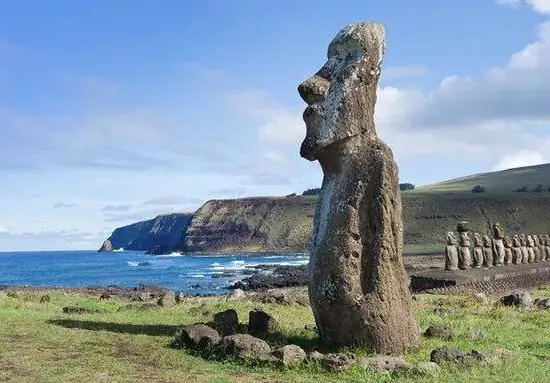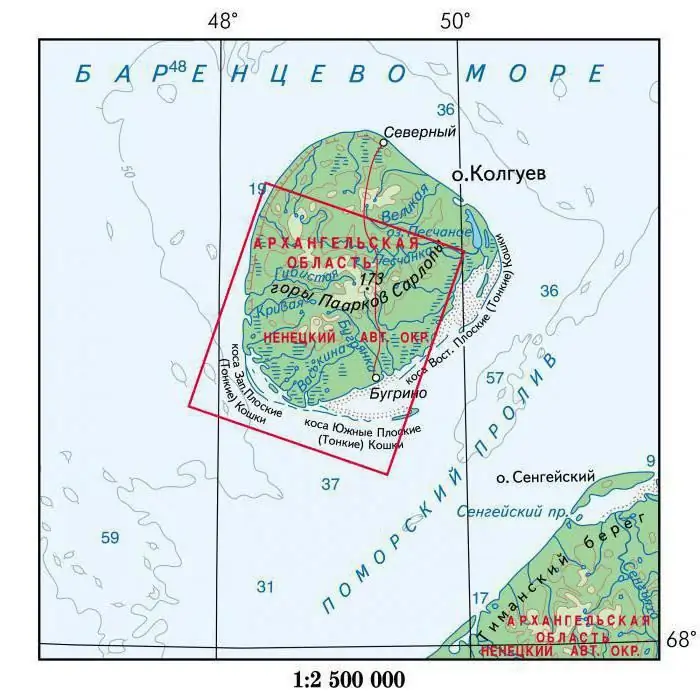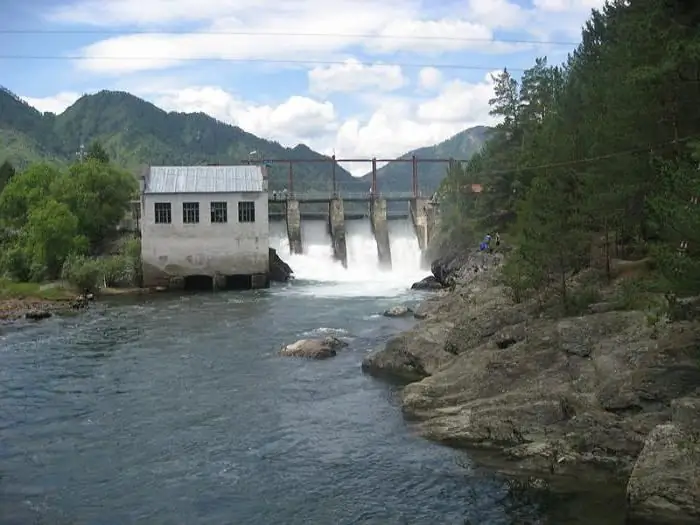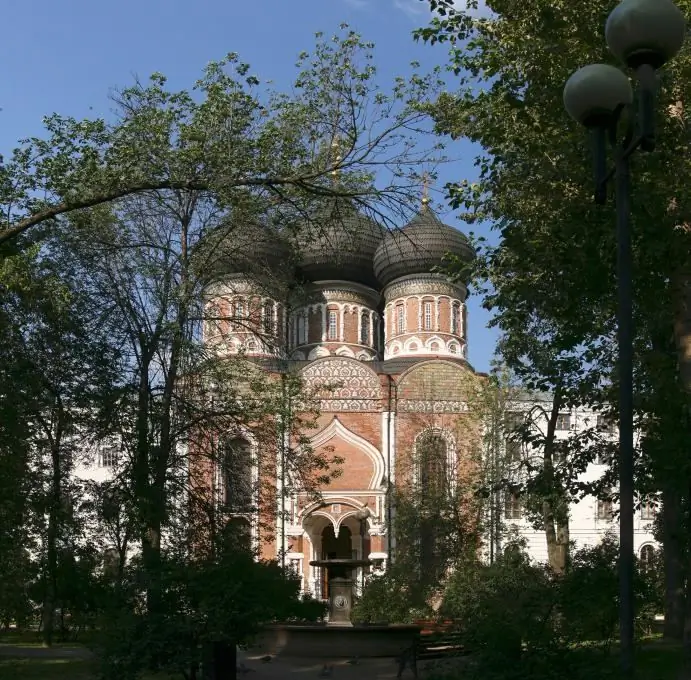- Author Harold Hamphrey [email protected].
- Public 2023-12-17 10:06.
- Last modified 2025-01-24 11:10.
The island of Svalbard remains for most Russians a kind of "terra incognita" - unexplored land. Some people even find it difficult to answer the question about the nationality of this territory. Most people only know that Svalbard is located somewhere far north, beyond the Arctic Circle, and the Russian Federation has some kind of right to it.
Should we compare this island with the Kuriles? We will clarify this issue below. Despite the location "almost at the North Pole", traveling to Svalbard is quite popular. About when to go to the polar piece of land, where to stay and what to see, we will tell in this article.

Where is the island of Svalbard
Let's start with a little correction. The fact is that the definition of "island" in relation to Svalbard will be incorrect. This is an archipelago. It lies only an hour and a half from the North Pole. Therefore, a typical landscape is an endless snowy desert, permafrost, whitebears.
The archipelago, with a total area of sixty-one thousand square kilometers, consists of three large islands, seven small ones and a large number of very small ones. Only the largest one is truly inhabited - Western Svalbard (37,673 km2). There is the only airport and the capital of the region, the city of Longyearbyen.
Besides him, there are villages in Western Svalbard: Barentsburg, Ny-Alesund, Grumant and Pyramiden. The last two are now depopulated. On other islands (North-East Land, Edge, Barents, Belom, Kongsoya, Wilhelma, Svenskoya), no more than a dozen people live, and even then only in the summer. The population of the entire archipelago does not exceed three thousand people.

Climate
The island of Svalbard lies in the Arctic Ocean between 76 and 80 degrees north latitude and 10°-32° east longitude. However, this location does not mean at all that the archipelago is a continuous arctic desert. Thanks to the Svalbard current (an offshoot of the Gulf Stream), the sea near the coast never freezes. The climate in the archipelago is not as severe as in other places at the same latitudes. For example, the average air temperature in January here is only 11-15 degrees below zero. In July, the thermometer rises only to +6 °С.
There are two tourist seasons here: from March to May, lovers of winter fun come and those who want to join the harsh polar winter. They ride snowmobiles, admire the northern lights. From June to August, the archipelago is visited by a completely different audience. Touristsenjoy the polar day, kayaking among icebergs, watching polar bears. There are those who consider this archipelago as a transit base on the way to the conquest of the North Pole.

Nature
Norwegians call the island of Svalbard Svalbard, which means "cold land". And the Dutchman Barents called the archipelago not according to climatic characteristics, but according to the relief - “Pointed Mountains”. In the language of the discoverer, this sounds like Spitz-Bergen. The highest point is Newton Peak. It is located in West Svalbard. Its height is not too high - 1712 meters, but the geographical position of the mountain turns it into a block covered with snow.
By the way, glaciers cover more than half of the entire archipelago. Even in summer you can find islands of snow. The shores of the islands are indented, there are many fjords. The vegetation here is typically tundra. There are dwarf birch, polar willow, lichens and mosses. The most common animal is the polar bear. Arctic fox and Svalbard deer (the smallest of all northern species) also live here. Birds mainly arrive in the summer. For the winter, only the polar partridge remains. But the sea around the coast of Svalbard is teeming with a variety of living creatures. There are whales, walruses, beluga whales, seals.

History
Most likely, the archipelago was discovered by the medieval Vikings. In the annals of 1194, a certain region of Svalbard is mentioned. Around the 17th century, the island of Svalbard became known to the Pomors. They called himGrumant. The archipelago was discovered for the world by the Dutch navigator Wilhelm Barents in 1596, although at about the same time, islands called Holy Russians appeared on the maps of our country.
Since Barents described seeing a huge number of whales in the local waters, many fishing boats rushed to the shores. Soon, Denmark and Great Britain began to make their claims to the islands. In the 60s of the eighteenth century, two scientific expeditions organized by M. Lomonosov visited here.
Despite the fact that the Russians did not build a single village here, some Pomors came here in the summer to hunt. When there were critically few animals left on the archipelago, the islands were abandoned for a hundred years. A new surge of interest in Svalbard arose at the turn of the 19th and 20th centuries, when mankind set out to reach the North Pole. The ice-free waters and relatively mild climate of the island were used by Arctic expeditions. Svalbard has become the main starting base.

Svalbard Island: who owns it?
When powerful deposits of coal were found on the archipelago, interest in the islands lost beyond the Arctic Circle escalated again. But in 1920, the question of the state ownership of the lands was finally decided by the world. In Paris, the so-called Svalbard Treaty was signed, according to which the archipelago retreated under the sovereignty of Norway. However, according to this agreement, all parties to the agreement (Great Britain, USA, France, Japan, Sweden, Italy, the Netherlands and later the USSR) retainedthe right to develop minerals.
Do I need a visa to visit the archipelago?
Theoretically, no. After all, it doesn’t matter whose island Svalbard is, citizens of all of the above signatory countries can freely visit the archipelago. However, in practice, getting to Svalbard straight from Russia is not so easy. Only in season, charter flights occasionally go there, and plane seats are reserved for polar explorers or civil servants. Therefore, tourists are forced to fly via Oslo (by SAS and Norwegian Airlines). And this requires a multiple entry Schengen visa to enter Norway. You can also visit the archipelago during a luxury cruise on the ocean liner Captain Khlebnikov.

Tourism
The Norwegian authorities very quickly reoriented the economy of the archipelago in the face of a decrease in the number of whales and polar bears and falling coal prices. Now the main bet on ecotourism. The direction is new. So far, only 2,000 tourists visit the cold islands every year. Do not contribute to the development of this industry and prices. Everything is expensive here: from a hotel room (the simplest economy option will cost a hundred dollars a night) to food. However, this does not stop we althy tourists. Climbing glaciers, sea rafting, dog sledding, collecting fossils (there are a lot of them on the archipelago) - all this is included in the mandatory program.
The islands are a duty-free trade zone. Thanks to her, the population of the archipelago lives more prosperously than the Norwegians on the continent. The island of Svalbard is protected from labor migrants. Work onMany mines have been discontinued and converted into museums. Only Russian miners do not stop coal production. Although this production is unprofitable and is subsidized by the state.
Money scandal
In 1993, the Moscow Court minted a commemorative coin "Island of Svalbard". It featured a polar bear and a map of the archipelago. Since the money had the inscription "Russian Federation", Norway perceived this as an encroachment on its territory. The diplomatic scandal was settled only when the money was withdrawn from circulation. Coins left in the hands of collectors are in high demand.






